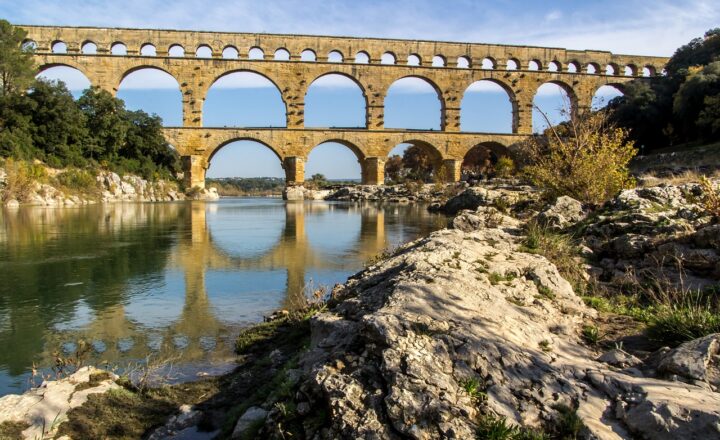The History of Fire Stations: How Facilities Have Evolved to Meet Modern Demands
November 13, 2024

Fire stations hold a unique place in our communities, serving not just as operational hubs for firefighters but as symbols of safety and resilience. The evolution of fire stations reflects the changing landscape of urban development, advances in fire technology, and shifts in societal expectations. This comprehensive article explores the history of fire stations, their architectural evolution, and how they have adapted to meet the demands of modern firefighting.
1. The Origins of Firefighting and Early Firehouses
The concept of organized firefighting dates back to ancient civilizations. The Romans developed their own fire brigade known as the “Cohortes Vigilum” around 6 A.D. They utilized a ranks structure, and individuals were appointed to oversee the safety of their assigned districts.
However, it wasn’t until the 14th century that the first fire engines, which resembled hand-pumped water carts, appeared in Europe. These primitive firefighting tools necessitated designated areas for storage and maintenance. Thus, the precursors to modern fire stations began to emerge. In the 17th century, cities like London and Paris established some of the first fire stations, albeit rudimentary in comparison to today’s standards.
Early firehouses were designed to accommodate a small number of firefighters and their equipment. Many were simple structures, often built using wood, with space primarily for the horses and carts used to transport fire-fighting materials. The facilities were more about storage than operational capability, as the rise of full-time, professional firefighters did not occur until the 19th century.
2. The Industrial Revolution and the Professionalization of Fire Services
The Industrial Revolution in the late 18th and early 19th centuries brought substantial changes to urban areas. The growth of cities expanded rapidly, leading to increased risks of fires due to more densely constructed buildings, manufacturing facilities, and the use of flammable materials. In response, municipalities recognized the need for dedicated fire protection and began to professionalize fire services.
This era marked the construction of fire stations on a larger scale. City planners designed fire stations that could house more firefighters, equipment, and horses. These buildings started to adopt classical architectural styles, often featuring large doors and bell towers to signal emergencies. For example, prominent architectural elements of fire stations in the United States during the 19th century included red brick facades, arched doorways, and intricate ornamentation to convey a sense of importance and safety.
As technology advanced, fire stations underwent further evolution. In the late 1800s, steam-powered fire engines replaced horse-drawn carriages. This transition necessitated fire stations that could accommodate these larger and more sophisticated engines. Consequently, many stations were retrofitted, and new ones featured improved design elements, which included larger bays to house the machinery and dedicated maintenance areas.
3. The 20th Century: Modernization and Community Integration
The 20th century saw continued technological advancements that reshaped firefighting. The introduction of motorized vehicles revolutionized fire services, prompting a significant redesign of fire stations. Buildings became more functional, focusing on efficiency and the ability to quickly dispatch vehicles and personnel. Bay doors were enlarged to accommodate fire trucks, and open layouts allowed for swift movement between different operational areas.
Moreover, the role of fire stations evolved from simply responding to fires to engaging with the community. As public expectations grew for a more proactive approach to fire safety, many fire stations developed community outreach programs. They became venues for educating residents about fire prevention, emergency preparedness, and safety practices.
Architecturally, fire stations of the mid-20th century began to reflect modernist designs. They featured clean lines, functional layouts, and an emphasis on industrial materials. Not only did they need to serve significant operational functions, but they also aimed to be welcoming spaces where community interactions could take place.
4. Contemporary Fire Stations: A Reflection of Community Needs
Today, fire stations are often designed with a focus on sustainability, technology, and aesthetics. Modern fire departments prioritize green building practices, incorporating energy-efficient systems, solar panels, and recycled materials into new constructions. The design elements tend to blend seamlessly with the surrounding environment while still standing out as symbols of civic pride.
Moreover, contemporary fire stations may include amenities that serve both firefighters and the community at large. This can involve fitness centers, community meeting rooms, and educational spaces designed for public classes or events. Firefighters often train in simulated environments and utilize integrated systems that leverage advanced technology,
Today’s fire department responses go beyond fires; they now manage emergencies related to medical services, natural disasters, and hazardous incidents. As such, the design of fire stations must accommodate diverse needs and facilitate flexibility in operations. Modern facilities often utilize open spaces that can be converted for different functions as required, ensuring they can adapt to emerging challenges.
5. Conclusion: The Future of Fire Stations
Fire stations have journeyed from simple storage facilities for primitive firefighting tools to advanced centers of community engagement and emergency response. The evolution of these facilities reflects broader trends in society, technology, and urban development. As we move into an age of advanced technology and heightened awareness of fire safety, it is likely that fire stations will continue to adapt to meet the demands placed upon them.
As our urban landscapes evolve, so too will the function and design of fire stations, ensuring they remain integral parts of our communities. Whether through adaptive reuse of historic structures or the construction of innovative new facilities, fire stations will continue to symbolize not only our commitment to public safety but also the resilience of our communities in the face of change.







